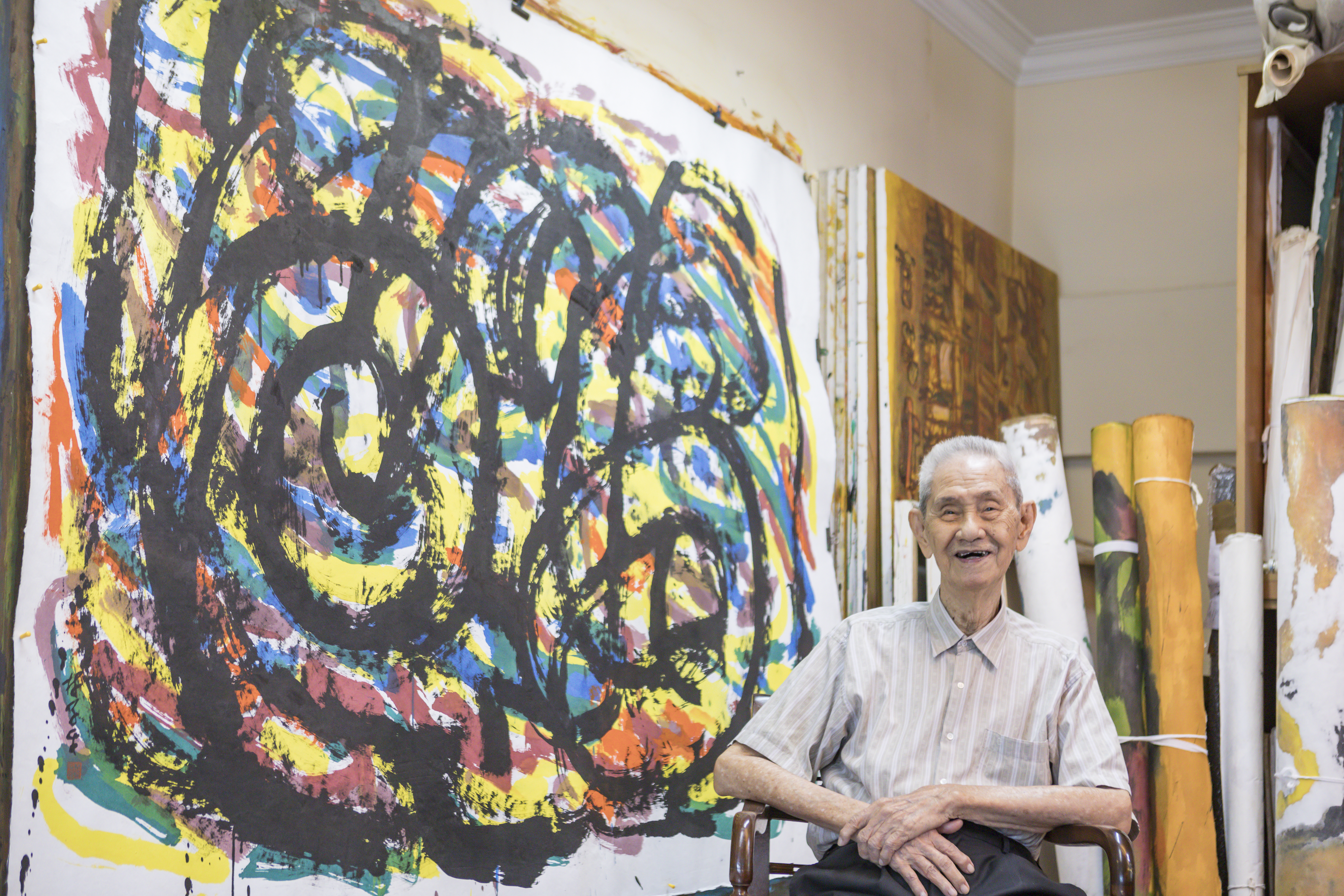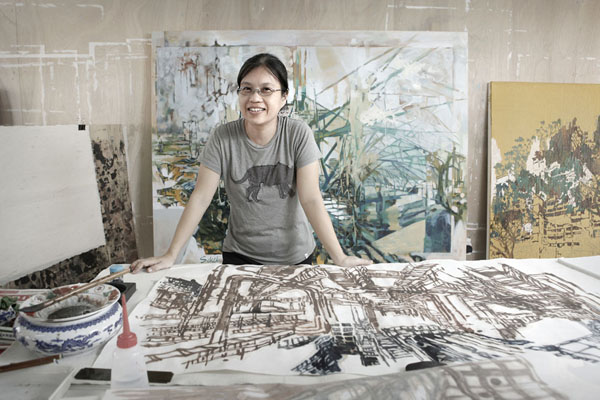
All About Artists
Guo Huawei: Surrealism in Chinese Ink
By Sophie-Isabelle Tan
Guo Huawei was born in Shandong, China in 1983. He graduated from the Faculty of Painting at the China Central Academy of Fine Arts in 2007 with a Master's Degree. As of now, he resides in Beijing, where he has gained considerable attention recently for his unique and current take on Chinese ink painting. His art takes the familiar and turns it into the fantastical, mixing the gentle fluidity of ink with the dreamy qualities of his style. He revisits the original intention of Chinese landscape painting, to inspire viewers to feel the subject matter rather than just admire it, and presents his own interpretation of the concept.
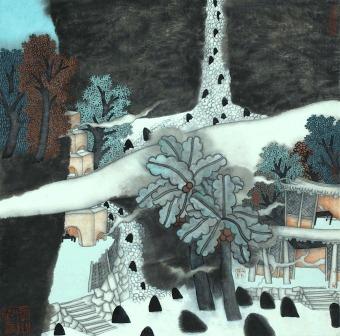
Summer Wind 夏有凉风
Guo's main subject matter is the Chinese landscape, a subject painted for centuries, as old and venerated in China as ink itself. However, Guo does not approach the subject the way artists before him have. Traditionally, artists would gently lead the viewer into the scene, painting serene images of trees, lakes and mountains. They would guide the viewer's eye, with a small boat or little island in the middle of the lake to catch your attention, or a road starting at the bottom of the page that slowly wound up the mountains, drawing your eye upwards. This also provided a link between the real world and the scenery of the painting, allowing the viewer to imagine themselves within that space.
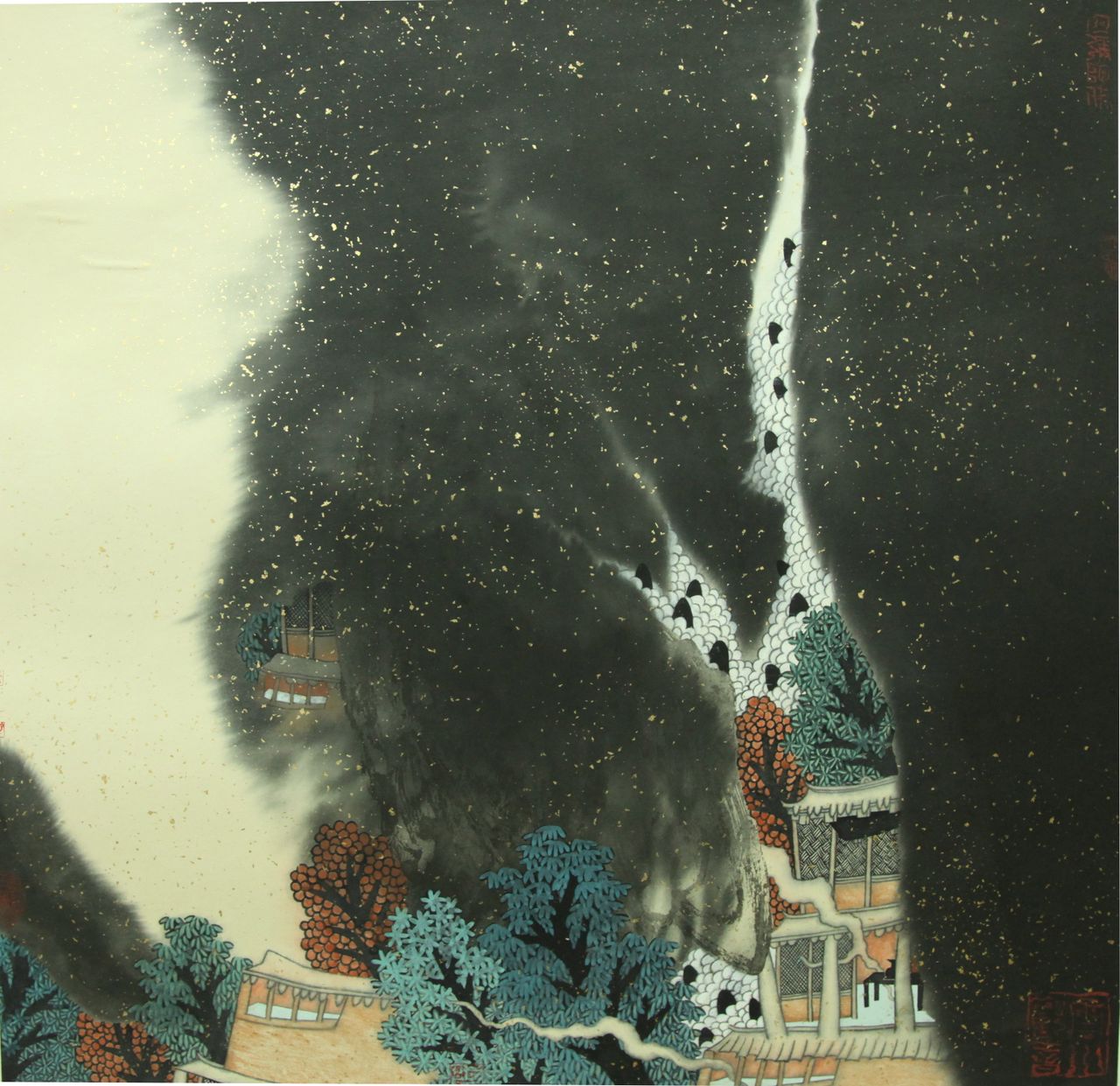
山雨欲来
By this logic, massive mountains, vast bodies of water, rough and uninviting terrain would be undesirable subjects, as it would distance the viewer. While Guo's works do not exactly depict landscapes such as these, they are certainly not peaceful vistas. His painting style is also rather distinct, as he utilises a polychromatic palette and a textured look. It is a departure off the typical simplistic and clean Chinese painting, showing his own individualistic flair.
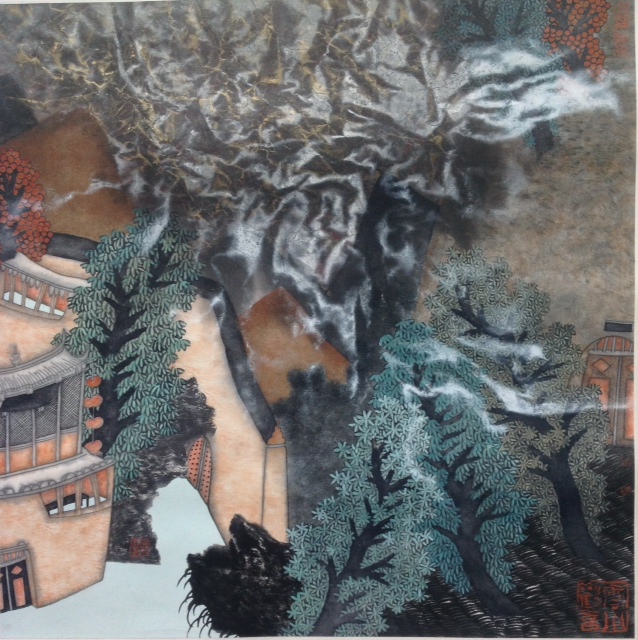
惊梦
There are those hints of staircases, roads and trails that invite viewers into the scene, but the scenes they are being invited into are hauntingly surreal and dream-like. Often covered in thick swathes of black ink, which could be interpreted as fog, rock formations or even an overgrown forest, there is a sense of mystery that surrounds his pieces. Traditional Chinese structures peek out from behind these huge clouds, usually relegated into only a corner of each work. They add to the mystery by presenting ancient buildings, as if the scene were somewhere in the past.
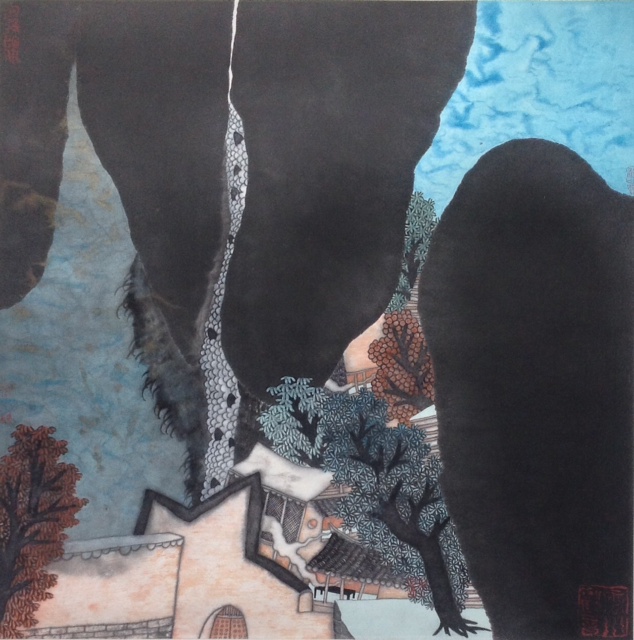
深谷幽居
The trees are multi-coloured, standing out from the smog. They are not entirely extraordinarily in colour, but pushed towards something unnatural. They are mostly green but also deep purple, red, orange and even blue. They add to the uncanniness of the landscapes, deepening the mystery and intrigue of each piece.
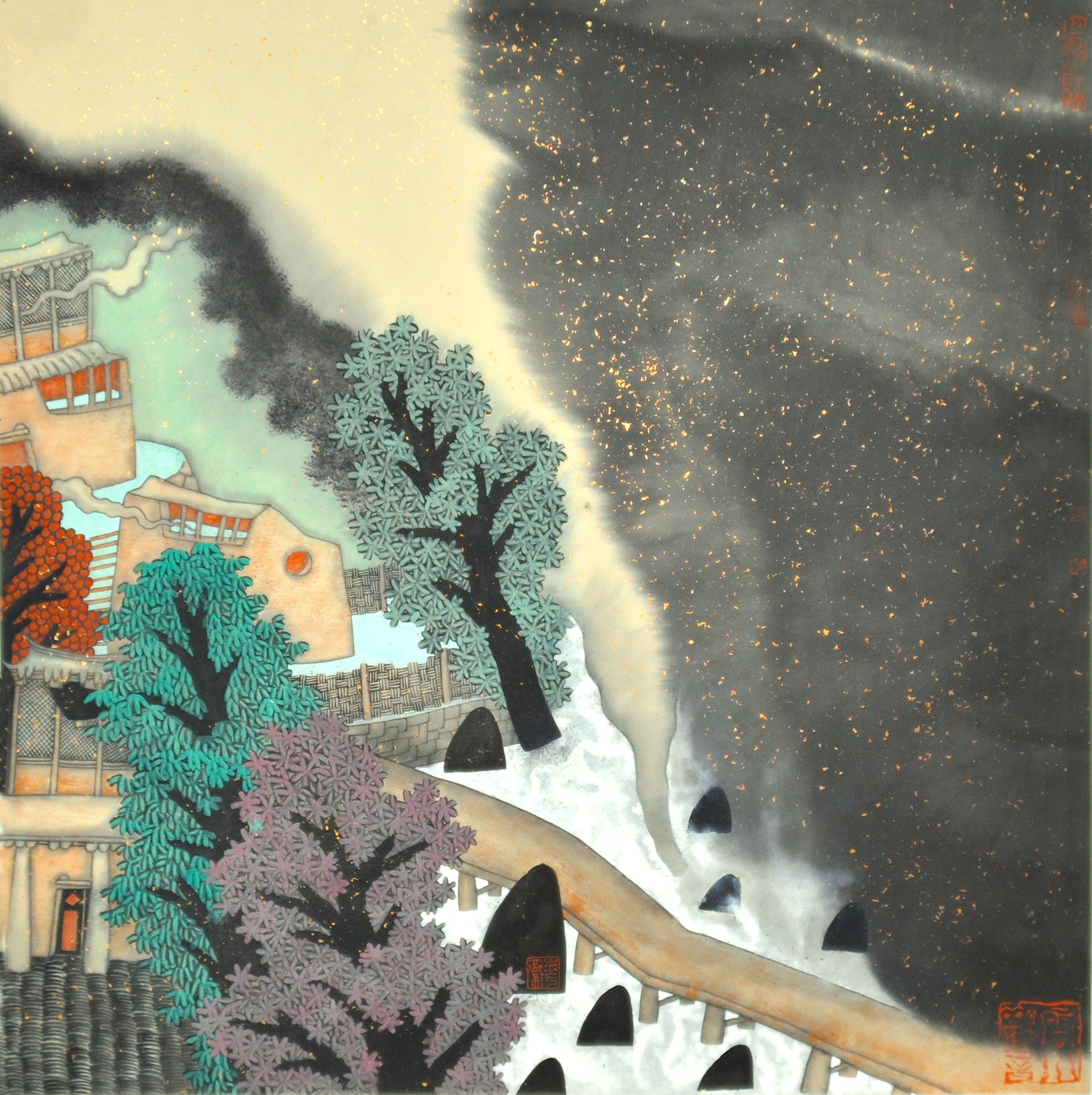
Dreamlike Clouds 云如梦
This is how Guo Huawei takes traditional techniques and concepts but turns them on their head. Instead of drawing in the viewer by providing them with something accessible, he instead presents them with something almost completely inaccessible, with just enough familiarity to capture their interest. His style is a reminder that Chinese ink painting has always been more about symbolic than representational of scenes and/or objects, motivating the viewer to develop an instinctive and emotional response to the works rather than simply resting on immediate impressions. In taking a medium that is usually associated with a very specific style, he manages to find a different way to the capture the soul of the landscape he has painted.

Summer Wind 夏有凉风
Guo's main subject matter is the Chinese landscape, a subject painted for centuries, as old and venerated in China as ink itself. However, Guo does not approach the subject the way artists before him have. Traditionally, artists would gently lead the viewer into the scene, painting serene images of trees, lakes and mountains. They would guide the viewer's eye, with a small boat or little island in the middle of the lake to catch your attention, or a road starting at the bottom of the page that slowly wound up the mountains, drawing your eye upwards. This also provided a link between the real world and the scenery of the painting, allowing the viewer to imagine themselves within that space.

山雨欲来
By this logic, massive mountains, vast bodies of water, rough and uninviting terrain would be undesirable subjects, as it would distance the viewer. While Guo's works do not exactly depict landscapes such as these, they are certainly not peaceful vistas. His painting style is also rather distinct, as he utilises a polychromatic palette and a textured look. It is a departure off the typical simplistic and clean Chinese painting, showing his own individualistic flair.

惊梦
There are those hints of staircases, roads and trails that invite viewers into the scene, but the scenes they are being invited into are hauntingly surreal and dream-like. Often covered in thick swathes of black ink, which could be interpreted as fog, rock formations or even an overgrown forest, there is a sense of mystery that surrounds his pieces. Traditional Chinese structures peek out from behind these huge clouds, usually relegated into only a corner of each work. They add to the mystery by presenting ancient buildings, as if the scene were somewhere in the past.

深谷幽居
The trees are multi-coloured, standing out from the smog. They are not entirely extraordinarily in colour, but pushed towards something unnatural. They are mostly green but also deep purple, red, orange and even blue. They add to the uncanniness of the landscapes, deepening the mystery and intrigue of each piece.

Dreamlike Clouds 云如梦
This is how Guo Huawei takes traditional techniques and concepts but turns them on their head. Instead of drawing in the viewer by providing them with something accessible, he instead presents them with something almost completely inaccessible, with just enough familiarity to capture their interest. His style is a reminder that Chinese ink painting has always been more about symbolic than representational of scenes and/or objects, motivating the viewer to develop an instinctive and emotional response to the works rather than simply resting on immediate impressions. In taking a medium that is usually associated with a very specific style, he manages to find a different way to the capture the soul of the landscape he has painted.


